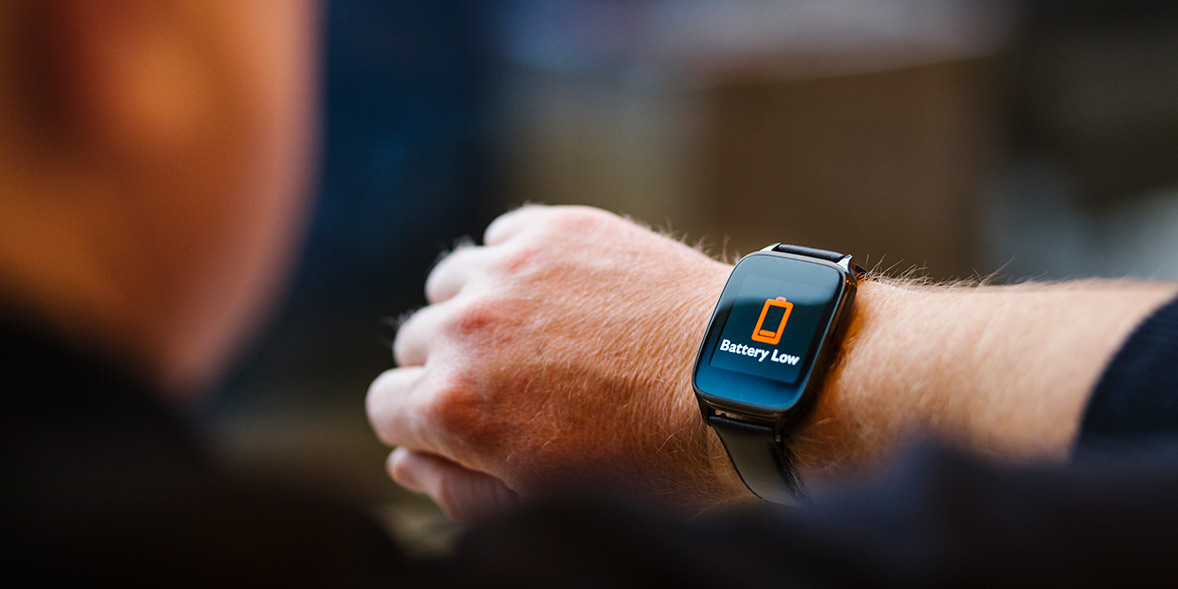These two features are killing the battery life on your smartwatch

When you spend a good amount of money on a new smartwatch, you expect the battery to last.
Most would hope for at least a day or two of use from a feature-packed smartwatch before reaching for the charger, and far more from a more lightweight, dedicated tracker. But if you're constantly scrambling to make it to the end of the day, our lab tests have revealed what's likely to be the cause.
Our smartwatch reviews and fitness tracker reviews reveal the models with the best battery life.
The features that could lose you 9 days of battery life
We’ve tested around 90 smartwatches over the last couple of years from brands like Apple, Samsung, Garmin, Google, and more. To see how battery life performs, we run a standard test to measure more typical, everyday use. Then, we put them through a more intensive test to represent more active usage of the smartwatch – this means GPS location tracking is on, the screen is set to maximum brightness, and the ‘walking’ workout mode is activated.
But our lab tests show that this combination is a battery killer. To be fair, manufacturers are often upfront about this, listing battery life with and without GPS. But you might be surprised to know that even starting a workout can be a significant drain. This typically sees your watch go into a ‘high-performance’ mode – where you heart rate is tracked constantly (instead of every few minutes) and power-hungry features like GPS are turned on.
So, how big an effect do these ‘active’ features have? We found that, on average, smartwatches lost almost 9 days of battery life in our intensive test. For example, the Samsung Galaxy Watch8 44mm normally lasts more than two days, but died in less than 15 hours with these features on. The more rugged Amazfit T-Rex 3 saw its battery life drop from an incredible 20 days to less than a day and a half.
Find out more about these features and how to use them without killing your battery.
Considering a more traditional tracker you wear on your wrist? Find out which type will suit you best in Should I buy a fitness tracker or a smartwatch?
Using GPS for location tracking

GPS tracking is excellent for accurately mapping your route and distance when you’re running, hiking, or cycling outdoors – giving you a more precise record of your journey. But you don’t always need it.
How to use GPS on a smartwatch more efficiently:
- Save it for the great outdoors: GPS is brilliant for tracking your route on a run, hike, or bike ride. But it’s a power-hungry feature that's constantly talking to satellites.
- Heading to the gym? You simply don't need it: For an indoor workout, a treadmill session, or just a walk to the shops, your watch's step counter is more than enough.
- The fix is simple: Before you start an indoor workout, check your watch's settings and make sure GPS is switched off. The battery you save will be significant.
Managing the screen brightness
Just like your smartphone, the brighter your screen, the more power it consumes. Setting it to 100% brightness, especially if you typically do this when you go outdoors, will drain your battery much faster.
How to use a smartwatch display efficiently:
- Let your watch do the work with Auto-Brightness: It's the single best way to get a screen that's readable in the sun without blinding you (and killing your battery) indoors.
- Ditch the 'Always-On' display: Do you really need to see the time, all the time? That constantly lit screen is a famous battery hog. Turning it off can add hours, or even days, to battery life.
- Be ruthless with your screen time-out: Dive into your settings and set the screen to turn off after 10 or 15 seconds. You'll be surprised how much power this saves.
- Choose a dark watch face: Bright, colourful, and animated watch faces on OLED and AMOLED displays require more energy to display than simple, dark ones.
When to use activities to track routines

Think of GPS and a bright screen as the two biggest battery drainers. So what's the third? It's not a feature, but a trigger: manually starting a workout. Tapping 'Start Outdoor Run' is like flipping a switch that tells your watch to go into a high-performance mode. It immediately cranks up the continuous heart-rate tracking and, crucially, often activates GPS by default. It's the action that brings the other battery hogs to the party.
Using activity tracking sparingly:
- Use it when you need detailed data: If you're training for a race, trying to hit specific heart rate zones, or for activities like swimming that requires special tracking, its worth the cost.
- Skip it for casual movement: For a simple walk to the shops or some light gardening, let your watch's automatic step counter do its job. You'll still get credit for being active without the significant battery drain.
Head to our guide to the best cheap smartwatches for more on picking the best budget option.
More ways to extend the battery life on your smartwatch
Beyond the big three battery hogs, most smartwatches offer several other simple ways to conserve power. If you’ve followed our advice above and still want to squeeze a little more life from each charge, here are a few more settings worth checking:
- Manage notifications: Your wrist doesn't need to buzz for every single email, WhatsApp group, and news alert. Head to your watch's app and be brutal about which notifications you really need.
- Go into airplane or 'low power' mode: Most modern watches have a battery-saver mode that shuts down power-hungry features like Wi-Fi and the always-on display. It's your secret weapon for making it through a long weekend without a charger.
- Disconnect Wi-Fi and Bluetooth when you don't need them: Your watch is constantly searching for signals. If you're not using these features, toggling them off in the settings is an easy win.




